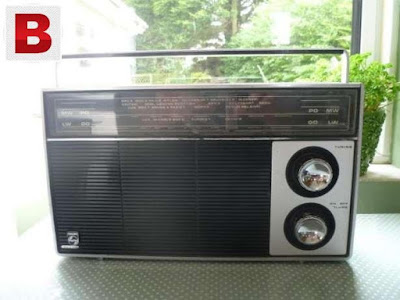 |
| Philips transistor radio, circa 1970 |
"I'd sit alone and watch your light
My only friend through teenage nights
And everything I had to know
I heard it on my radio ...
You had your time, you had the power
You've yet to have your finest hour
Radio, radio" - Queen, Radio Ga Ga
You've yet to have your finest hour
Radio, radio" - Queen, Radio Ga Ga
Back in 1974, Mum bought a transistor radio, and it was a technical marvel. Older radios used vacuum tubes, took minutes to warm up, failed often and were the size of a coffee table. The new radio lasted over 10 years despite being knocked off the mantelpiece more than once.
Eventually I learned in Uni this marvel is of a new superheterodyne design. And such a satisfying word it was- it rolls off your tongue guaranteed to impress those 1960s era dinosaurs still clinging to their relay logic computers.
 |
| Transistor Radio |
 |
| Radio signal at various stages |
Then in 1992 there was this incredible IEEE paper "Software Radio: Survey, Critical Analysis and Future Directions" by Joe Mitola, describing a radio largely implemented in software, a Software Defined Radio, and everything changed again.
Software allowed the audio signal to be digitally encrypted; security is now much stronger. The military was an enthusiastic early adopter. It was also more resistant to jamming, used its radio spectrum much more efficiently, and more than one radio protocol can be supported. This was a great boon to cellphones, especially the base stations.
But SDR was not really my specialty - it was far removed from the superheterodyne of yore, and so for the next 20 years SDR remained an exotic technical curiosity, extolled in the IEEE.
In 1998 Digital Terrestrial Television DVB-T started replacing regular analog TV worldwide. Realtek, a Taiwan IC maker introduced the RTL2832U, and IC meant for DVB-T. In 2010 Eric Fry, while writing a Linux driver for the RTL2832U discovered that it was possible to read raw I/Q data from it. This meant the RTL2832U-based TVB-T USB dongle can be used as a cheap general-purpose SDR.
 |
| The RM39 RTL2832-based TVB-T USB Dongle au naturel |
And everything changed again. Like the superheterodyne, SDR is suddenly within reach.
In the next few posts I shall show how to install SDR software for Slackware 14.2. Some of the uses for SDR are a low-cost spectrum analyzer, lightning detector and autogate remote hacker. All far better things to do than watching TV with it.
Life is good- Happy trails.


No comments:
Post a Comment